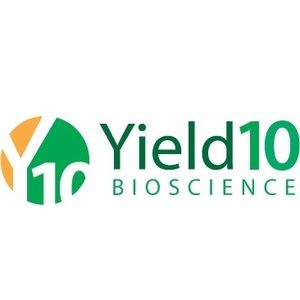Yield10: Winter camelina shows tolerance to commonly used herbicides

March 18, 2024
BY Yield10 Bioscience Inc.
Yield10 Bioscience Inc., an agricultural bioscience company, on Feb. 29 reported that its proprietary varieties of winter Camelina sativa (camelina) in development responded as expected to herbicides in the first field tests conducted in the United States. Yield10 tested winter camelina engineered with tolerance to glufosinate (HT), an herbicide widely used to manage weeds and protect yields in crop rotations in North America, as well as camelina with stacked glufosinate and Group 2 tolerance (Stacked HT), to provide tolerance to Group 2 herbicide residues in soil persisting from use on prior crops. Yield10 believes that HT and Stacked HT traits in camelina are critical to enabling grower adoption of the crop and planting on large acreage to produce feedstocks for biofuel and omega-3 oil for the aquafeed and nutrition markets. Yield10 has previously reported herbicide tolerance in spring camelina, where the company has selected lead and back-up commercial-quality lines for development.
In the fall of 2023, Yield10 researchers initiated the first field tests of candidate winter camelina deployed with stacked HT traits intended to provide the plants with tolerance to the application of glufosinate, an over-the-top broadleaf herbicide, as well as tolerance to soil residues of Group 2 herbicides, specifically including tolerance to both imidazolinones (IMI) and sulfonylureas (SU). Group 2 herbicides are commonly used to manage weeds in cereal and other crop rotations and can persist in the soil for months following use. Prior to planting, the test fields were pretreated with Group 2 herbicides (two weeks prior to planting) to generate plots with soil residues of either IMI or SU herbicides. The winter stacked HT camelina and control camelina without HT were subsequently planted. Preliminary interim results of these field tests indicated that Yield10’s stacked HT winter camelina performed well on the field plots pre-treated with Group 2 herbicides. By comparison, significant injury was observed to control winter camelina grown on soil containing IMI or SU residues. In the spring of 2024, these winter field plots will be sprayed with glufosinate for broad leaf weed control.
Yield10 researchers also initiated in the fall of 2023 the first field tests of candidate winter camelina lines deployed with the trait that provides tolerance to the spray application of glufosinate. The winter camelina was planted, and the field plots were subsequently sprayed with glufosinate in accordance with the field trial design. Winter camelina engineered with glufosinate tolerance remained healthy, while field plots of camelina without the herbicide tolerance trait did not survive the spray. Additional spraying of glufosinate on the winter HT camelina is planned in the spring of 2024.
Yield10 expects to harvest the winter field test plantings in the summer of 2024 and conduct an evaluation of its seed yield, oil content, herbicide tolerance and overall agronomy.
Advertisement
Advertisement
“Our focus on the development of herbicide tolerant and stacked herbicide tolerant camelina is intended to provide significant differentiation of our elite camelina varieties from conventional varieties while potentially enabling growers to seamlessly integrate camelina production into their crop rotations on a large-scale,” said Kristi Snell, Ph.D., chief science officer of Yield10 Bioscience. “Stacked HT technology is particularly important for planting winter camelina in the fall after harvest of the previous crop. The encouraging results from the first field testing of our winter HT and Stacked HT camelina varieties marks another milestone in our camelina program and demonstrates the leadership position we have established deploying new traits into camelina to potentially drive the value of the crop.”
Advertisement
Advertisement
Related Stories
The USDA significantly increased its estimate for 2025-’26 soybean oil use in biofuel production in its latest World Agricultural Supply and Demand Estimates report, released July 11. The outlook for soybean production was revised down.
U.S. fuel ethanol capacity fell slightly in April, while biodiesel and renewable diesel capacity held steady, according to data released by the U.S. EIA on June 30. Feedstock consumption was down when compared to the previous month.
The U.S. EPA on July 8 hosted virtual public hearing to gather input on the agency’s recently released proposed rule to set 2026 and 2027 RFS RVOs. Members of the biofuel industry were among those to offer testimony during the event.
The USDA’s Risk Management Agency is implementing multiple changes to the Camelina pilot insurance program for the 2026 and succeeding crop years. The changes will expand coverage options and provide greater flexibility for producers.
The USDA’s National Agricultural Statistics Service on June 30 released its annual Acreage report, estimating that 83.4 million acres of soybeans have been planted in the U.S. this year, down 4% when compared to 2024.
Upcoming Events










